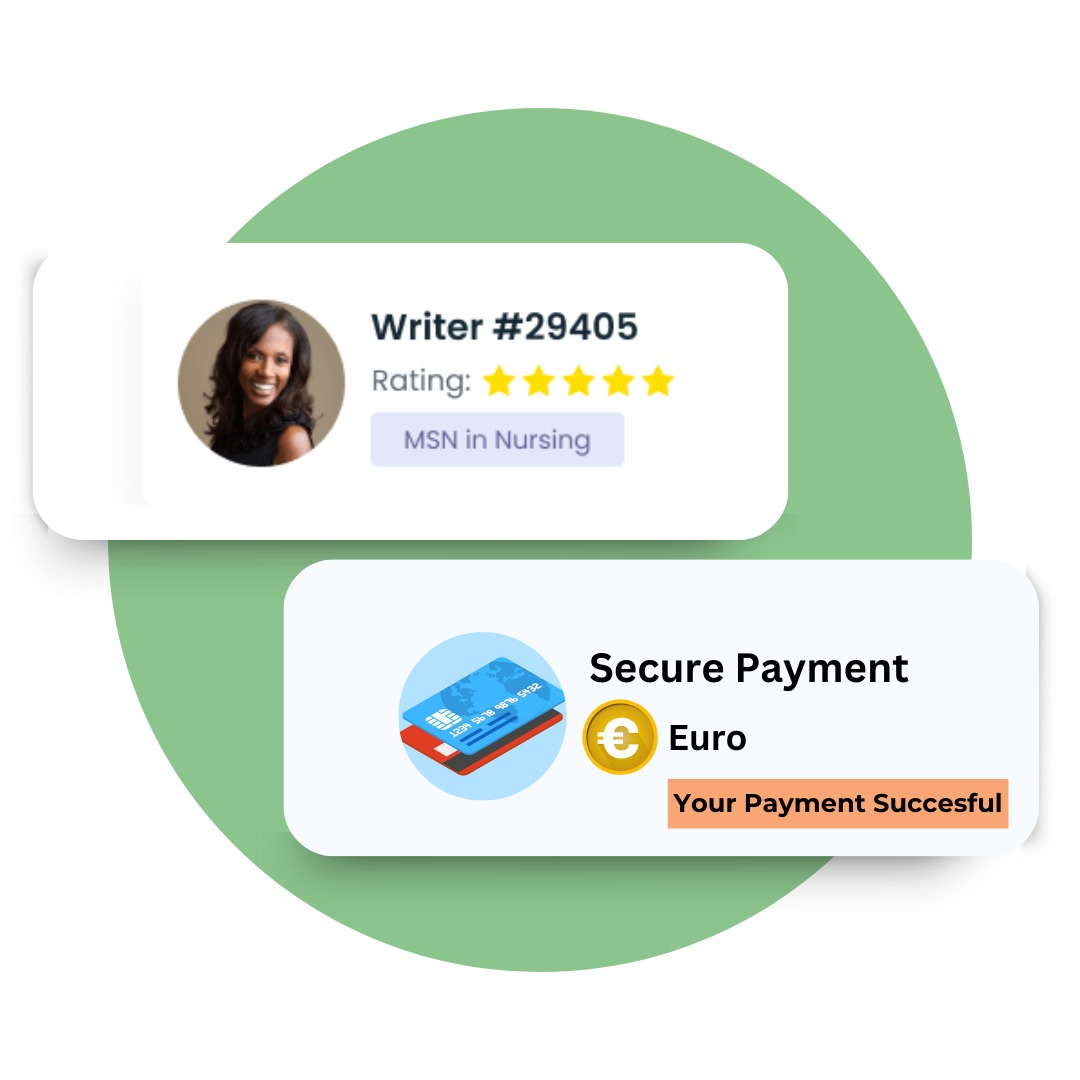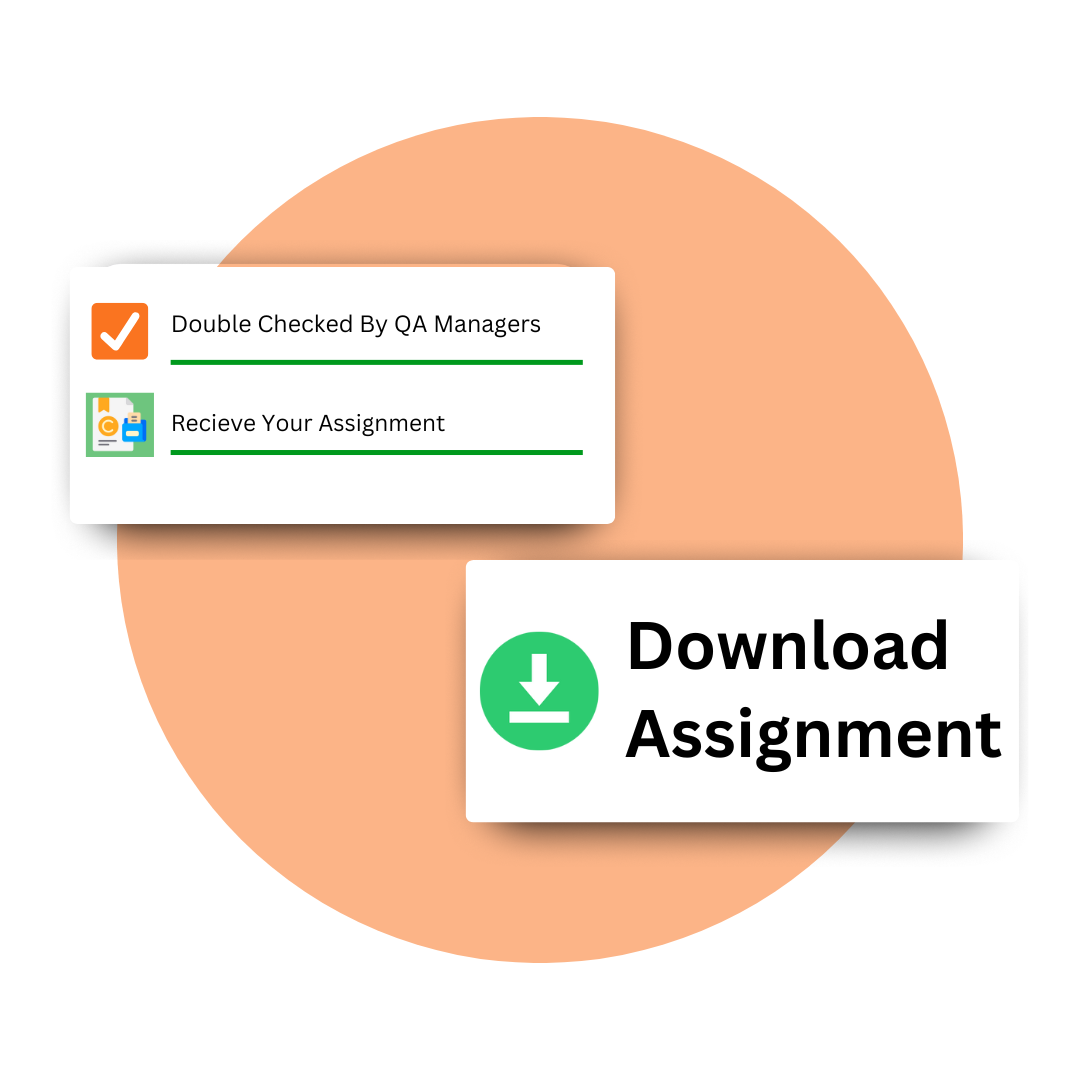Get CIPD 3CO04 assignment help in UAE in 3 effortless steps: place your order, review the work, and submit for success!

Let us know your assignment details after filling out the form. We will provide you with a quote for your assignment after reviewing the details.

Pay the quoted amount after review and select an expert according to your choice.

Your assignment will be sent to your mailbox. Download it and it is ready for submission.
We ensure the timely delivery of quality 3CO04 assignments irrespective of how strict the deadline is. Hire us for a smooth academic journey.
Wondering, “Can I pay someone to do my Essentials of People Practise Assignment from scratch?”. Hire us for 100% original assignments crafted by genius minds.
Let us know if you are not happy with the assignment solution and claim-free revisions until you are 100% satisfied.
We don’t entertain the idea of hidden charges in any shape or form. Hire us for competitive pricing and safe checkouts.
Struggling with your CIPD Level 3 3CO04 unit assignment? Our UAE experts offer affordable, 100% human-written solutions tailored specifically to your needs. Whether it’s understanding performance management, reward systems, or supporting employee development, we provide expert assistance to ensure your assignment meets all CIPD standards without breaking the bank.
cipdassignmenthelper.ae guarantees well-researched, original content that aligns with your assignment criteria. Our team focuses on delivering high-quality CIPD coursework help, fully personalized to your requirements. With a commitment to excellence, you’ll receive a custom-written solution that is both comprehensive and easy to understand.
Save time and stress with our affordable service. Let our UAE-based experts handle your 3CO04 Essentials of People Practice answers, crafted entirely by experienced professionals, to help you secure top marks. Reach out today and get started!
1.1 Explain each stage of the employee lifecycle and the role of the people professional within it.
The employee lifecycle consists of several key stages that employees progress through during their time with a company. Each stage is crucial for fostering a positive experience for both the employee and the employer, and the role of the people professional is vital in ensuring these stages are executed effectively. Here’s a detailed breakdown of each stage and the responsibilities of people professionals within them:
Recruitment involves attracting, screening, and selecting candidates for open positions within the company.
Role of People Professional:
Onboarding is the process of integrating new employees into the organization, helping them acclimate to their roles and the company culture.
Development focuses on providing employees with opportunities to grow their skills and advance their careers.
Performance management involves setting goals, providing feedback, and evaluating employee performance.
Role of People Professional:
Engagement focuses on creating a motivating and inspiring work environment that encourages employees to perform at their best.
Retention involves strategies aimed at keeping employees engaged and satisfied to reduce turnover.
1.2 Explain different ways in which you can prepare information for specified roles.
Preparing information for specified roles can be done through various effective methods, each serving a unique purpose:
1.3 Explain different recruitment methods and when it is appropriate to use them.
Recruitment methods vary based on the company’s needs and the specific role being filled. Here are some common methods and when to use them:
1.4 Explain factors to consider when deciding on content of copy used in recruitment methods.
When crafting recruitment copy, several key factors should be considered:
2.1 Explain different selection methods and when it is appropriate to use them.
Employers use different methods to choose the best candidates for jobs. The three most common methods are interviews, aptitude tests, and work samples. Each of these methods has its own benefits and drawbacks, making it important for employers to choose the right one based on the job requirements.
Interviews are the most common way to evaluate candidates. They allow employers to meet candidates in person and understand their personalities, communication skills, and how they might fit into the company. However, interviews can be influenced by personal biases, meaning that some candidates might get a better chance just because they are good at speaking rather than being the most qualified.
Aptitude tests measure a candidate’s ability to do specific tasks or learn new skills relevant to the job. These tests provide objective results, helping employers see who has the potential to succeed. However, they can be expensive and take time to set up, which might be a downside for some businesses.
Work samples involve giving candidates tasks similar to what they would do on the job. This method allows employers to see how well candidates perform real work. While work samples can provide valuable insights, they can also be costly and time-consuming to create. Overall, using a mix of these methods can help employers find the right fit for their teams.
2.2 Develop selection criteria and shortlist candidate applications for interview for an identified role.
The selection criteria for the interview process should be tailored to the specific role being filled, though some general factors can be considered. Key considerations might include:
To effectively shortlist candidates, employers should first determine the essential qualifications that applicants must possess to be considered for the position. After establishing these minimum requirements, employers can begin evaluating applications and narrowing down the candidate pool to those who most closely match the selection criteria. This approach ensures that the most suitable candidates are identified for further consideration in the interview process.
2.3 Participate effectively in a selection interview and the decision-making process for an identified role.
When participating in a selection interview, it’s essential to engage actively in the process. This means being enthusiastic about the role and demonstrating your genuine interest. Ask thoughtful questions, provide relevant examples from your experience, and express excitement about the opportunity to contribute to the organization.
Prepare by researching the organization and the specific role for which you are being interviewed. Show that you understand the company’s mission, values, and goals, and articulate how your skills and experiences align with the position’s requirements. Highlight your strengths and attributes that make you a good fit for the role, ensuring that you connect your qualifications to the needs of the organization.
During the interview, maintain honesty and transparency in your responses. The interview panel will be looking for authentic evidence of your suitability for the role, so it’s crucial to accurately represent your skills and experiences. Additionally, asking questions about the organization and the role demonstrates your interest and helps you determine if the position aligns with your career goals.
After the interview, take the time to express your gratitude. Thank the interview panel for their time and consideration. Following up with a thank-you email or letter reiterating your interest in the role and emphasizing your fit for the position can leave a positive impression. Finally, consider staying in touch with the organization to reinforce your interest and keep yourself on their radar. This proactive approach can enhance your chances of success in the selection process.
2.4 Explain the selection records that need to be retained.
Organisations are required to keep selection records for a minimum period of six months after the individual has been appointed. The types of records that should be kept include:
Organisations may also wish to keep records for a longer period, particularly if the individual is deemed to be a high-potential employee. The records should be stored in a secure location and only authorised personnel should have access to them.
2.5 Write letters of appointment and nonappointment for an identified role.
Appointment letters are essential in the hiring process, as they formally extend a job offer to a candidate while outlining the terms and conditions of employment. This document sets clear expectations for both the employer and the employee.
In contrast, non-appointment letters are sent to candidates who were not selected. These letters thank them for their interest and inform them of the unsuccessful outcome, maintaining a professional tone.
Both types of letters contribute to an efficient and respectful hiring process, helping organizations create a positive impression among applicants.
3.1 Explain the importance of work-life balance within the employment relationship and how it can be influenced by legislation.
Work-life balance is crucial in the employment relationship for two main reasons: employee productivity and retention. When employees can manage their work and personal lives effectively, they are more productive, satisfied, and less likely to be absent. Conversely, constant stress and lack of balance lead to burnout and higher turnover rates.
Legislation, such as the Working Time Regulations 1998, plays a vital role in promoting work-life balance by ensuring employees have rights to paid leave, rest breaks, and limits on working hours. This legal framework helps employees recharge, enhancing productivity and job satisfaction. Ultimately, a good work-life balance improves both employee well-being and organizational success.
3.2 Explain the concept of wellbeing in the workplace and why it is important.
Wellbeing in the workplace refers to employees maintaining a healthy balance between work and personal life, including time for leisure and stress management. Workplace wellbeing is important for several reasons: it boosts employee productivity and engagement, reduces burnout, and fosters a positive company culture. When employees feel good physically and emotionally, they perform better and are less likely to experience health issues.
Furthermore, implementing wellness programs can lead to lower healthcare costs for organizations. A focus on well-being not only benefits employees but also enhances overall organizational performance.
3.3 Summarise the main points of discrimination legislation.
Discrimination legislation aims to protect individuals from unfair treatment based on characteristics such as race, gender, religion, or disability. While laws vary by country, they generally prohibit practices like biased recruitment, racial or sexual jokes, and social exclusion based on beliefs.
Despite progress, discrimination remains a significant issue. Awareness of existing legislation is crucial for effectively addressing discrimination. Companies should also establish clear policies and procedures to handle incidents of discrimination to promote a fair workplace.
3.4 Explain what diversity and inclusion mean and why they are important.
Diversity and inclusion focus on creating an environment where all individuals feel safe, respected, and valued. Diversity refers to the presence of various characteristics within a group, including race, gender identity, sexual orientation, and abilities. Inclusion ensures that everyone has the opportunity to participate fully and that their voices are heard.
Both concepts are vital for fostering an equitable workplace. Organizations that embrace diversity and inclusion are more likely to have engaged employees and outperform their peers. A sense of belonging enhances productivity and innovation within teams.
3.5 Explain the differences between fair and unfair dismissal.
In the UAE, dismissals fall into two categories: fair and unfair. Unfair dismissal occurs when an employee is terminated for unlawful reasons, such as discrimination or breach of contract. Fair dismissal happens for valid reasons, including misconduct or poor performance.
Common unfair dismissal claims include wrongful termination, demotion without cause, and forced unpaid leave. If employees can demonstrate that their termination meets these criteria, they may successfully claim unfair dismissal. Understanding these distinctions helps protect employee rights and promotes fair employment practices.
4.1 Explain the purpose and components of performance management
Performance management aims to enhance both individual and organizational performance by defining expectations, establishing goals, providing constructive feedback, and aligning rewards with outcomes. It encompasses the processes and systems managers employ to:
A successful performance management system relies on clear expectations, consistent feedback, recognition for achievements, coaching for development, and corrective measures for any performance issues.
4.2 Explain factors that need to be considered when managing performance.
Several key factors must be considered in effective performance management.
One of the most critical is establishing clear expectations. Setting realistic and achievable goals ensures employees understand what is required of them. If expectations aren’t met, professional training or coaching may be necessary to support improvement.
Regularly monitoring employee progress and delivering timely feedback is equally important.
Employee motivation plays a vital role in performance management as well. Recognizing accomplishments and rewarding good performance can significantly boost morale and encourage high productivity levels.
Lastly, effective communication is fundamental. Keeping employees informed about company goals and policies while being available to address questions and concerns fosters a supportive environment.
4.3 Explain different methods of performance review.
There are several common methods for conducting performance reviews:
Choosing the appropriate method depends on your organization’s specific needs and preferences. There’s no one-size-fits-all approach to performance reviews.
5.1 Explain the key components of an effective total reward system.
An effective total reward system is essential for attracting, motivating, and retaining employees, and it should be fair, equitable, and inspiring. Key components include:
When these components are effectively integrated, the total reward system can significantly enhance employee satisfaction and retention.
5.2 Explain the relationship between reward and performance.
The relationship between reward and performance is closely intertwined. Rewards serve as positive reinforcement, increasing the likelihood of desired behaviours being repeated. Research indicates that tangible rewards, such as bonuses or prizes, often have a stronger impact than intangible rewards, like verbal praise.
However, the effectiveness of rewards heavily depends on their implementation. For example, while rewarding task completion can boost performance, offering rewards for every minor correct action may lead to diminished performance due to overjustification.
It’s important to recognize that while extrinsic motivators like rewards can influence behaviour, they aren’t always necessary. Many individuals are intrinsically motivated by personal satisfaction or interest in their tasks. In some cases, introducing rewards for enjoyable activities can even undermine motivation. Therefore, understanding the nature of the activity and the individual’s motivations is key when deciding to use rewards.
5.3 Explain the reasons for treating employees fairly in relation to pay.
Research consistently shows that employees who perceive fairness in their pay are generally more engaged and productive. Moreover, satisfied employees are likely to remain with behaviour employers longer, reducing turnover costs and fostering a more stable workforce.
Fairness in pay is subjective, as individual perceptions of what constitutes fair compensation can vary. Therefore, organizations need to understand the diverse perspectives and needs of their employees concerning compensation. By creating a transparent and equitable pay structure, businesses can promote a culture of fairness, keeping employees happy, engaged, and productive in the long run.
6.1 Explain why learning and development activities are of benefit to individuals and organisations.
Learning and development activities offer significant advantages for both individuals and organizations. For individuals, these activities enhance skills and knowledge, ensuring they remain current with technological advancements and evolving work practices. As individuals upgrade their competencies, they become more efficient and effective in their roles, leading to improved productivity.
For organizations, investing in learning and development boosts staff morale and motivation, contributing to a more engaged workforce. Moreover, it aids in employee retention by demonstrating a commitment to their growth and career progression, ultimately benefiting the organization by cultivating a skilled and loyal team.
6.2 Describe different types of learning needs and reasons why they arise for individuals and organisations.
Learning needs can generally be categorized into three types:
Each learning need can emerge for various reasons. Compliance needs might arise due to regulatory changes or competitive pressures, while capability needs may surface from organizational changes or new product introductions. Motivation needs often develop from an individual’s pursuit of personal growth or changes in their professional circumstances.
6.3 Summarise different face-to-face and blended learning and development approaches, including: facilitation; training; coaching; mentoring.
Different face-to-face and blended learning and development approaches can effectively support individuals and organizations. These include:
Each approach serves unique purposes and can be tailored to meet the specific needs of individuals and organizations.
6.4 Explain how individual requirements and preferences must be accommodated in the design and delivery of learning and development
Recognizing that individuals have diverse learning styles and preferences is crucial when designing and delivering learning and development activities. Some may thrive in hands-on, experiential learning environments, while others might prefer traditional methods such as lectures or reading materials. Additionally, the learning environment plays a significant role; some individuals may excel in group settings, while others may favour independent study.
By accommodating these varying preferences, organizations can create inclusive learning experiences that maximize engagement and effectiveness, ensuring that all employees benefit from development opportunities.
6.5 Discuss how learning and development can be evaluated.
Evaluating the effectiveness of learning and development activities can be approached in several ways:
Through these evaluation methods, organizations can ensure that their learning and development activities are effective and aligned with both individual and organizational goals.
Discover how our expert guidance has transformed their academic journeys and empowered their success.
H
Hamdan saif

Only 2 days were left to submit my 3000-word CIPD Level 3 assignment at Leeds Beckett University and I was panicked. But thanks to CIPD Assignmnet Helper who came to the rescue and delivered quality assignments within a day. I had enough time to revise it before submission.
F
Fathima Qureshi

As a student from LEORON Institute, I was afraid to choose an online service for my CIPD level 3 assignment but the result I got from the CIPD Assignment Helper was outstanding. The structure and the coverage of topics were very clear. My instructor had a positive feedback on the assignment. Will be back here soon! Thank you so much.
A
Abu Bakar

I needed a last-minute assignment for my CIPD Level 3 and thanks to the CIPD assignment helper. they delivered a perfectly written assignment that my professor in PwC’s Academy was impressed with and gave me top marks every time I get an assignment I come here and get top marks.
M
Muhammad Al Maqah

I’m a student doing my CIPD course from avodo in Fujairah. I was struggling with my CIPD Level 3 assignment but thanks to this website. I got my assignment within 3 days and the assignment quality was so good that I passed my course with very good grades.
M
Mariam

Thank you for your professional assignment; today i was appreciated by my professors for writing the best assignment and they praised me because of you and they don’t even know that
A
Abdul Hassan

I ordered my CIPD assignment here for the first time and got outstanding results. I got an A+ and saved a lot of time.
Struggling with your 3CO04 assignment? Reach out for professional help today!
